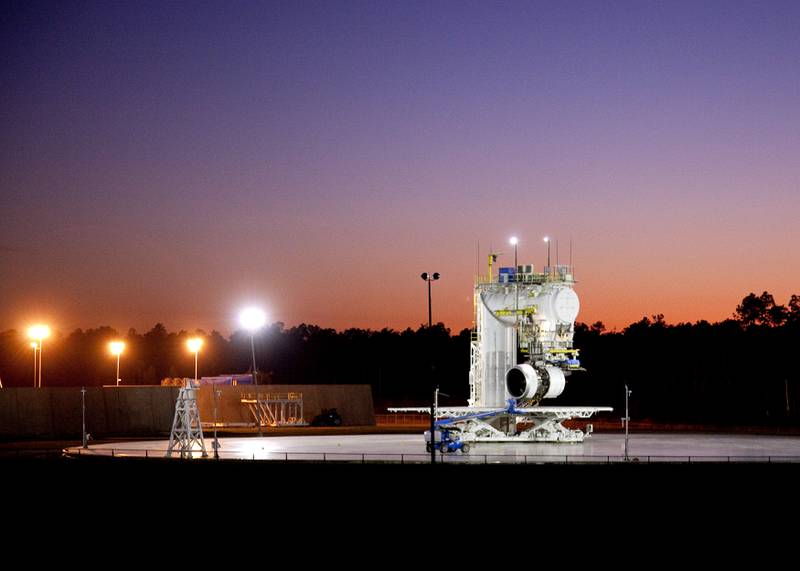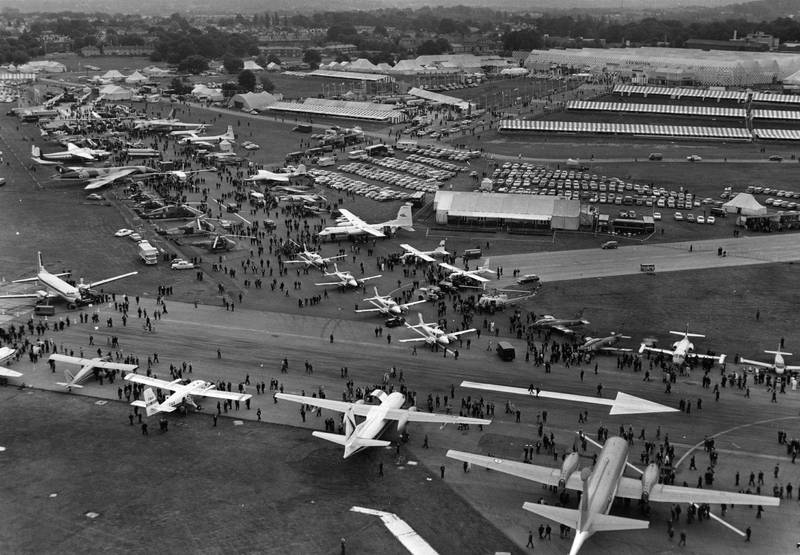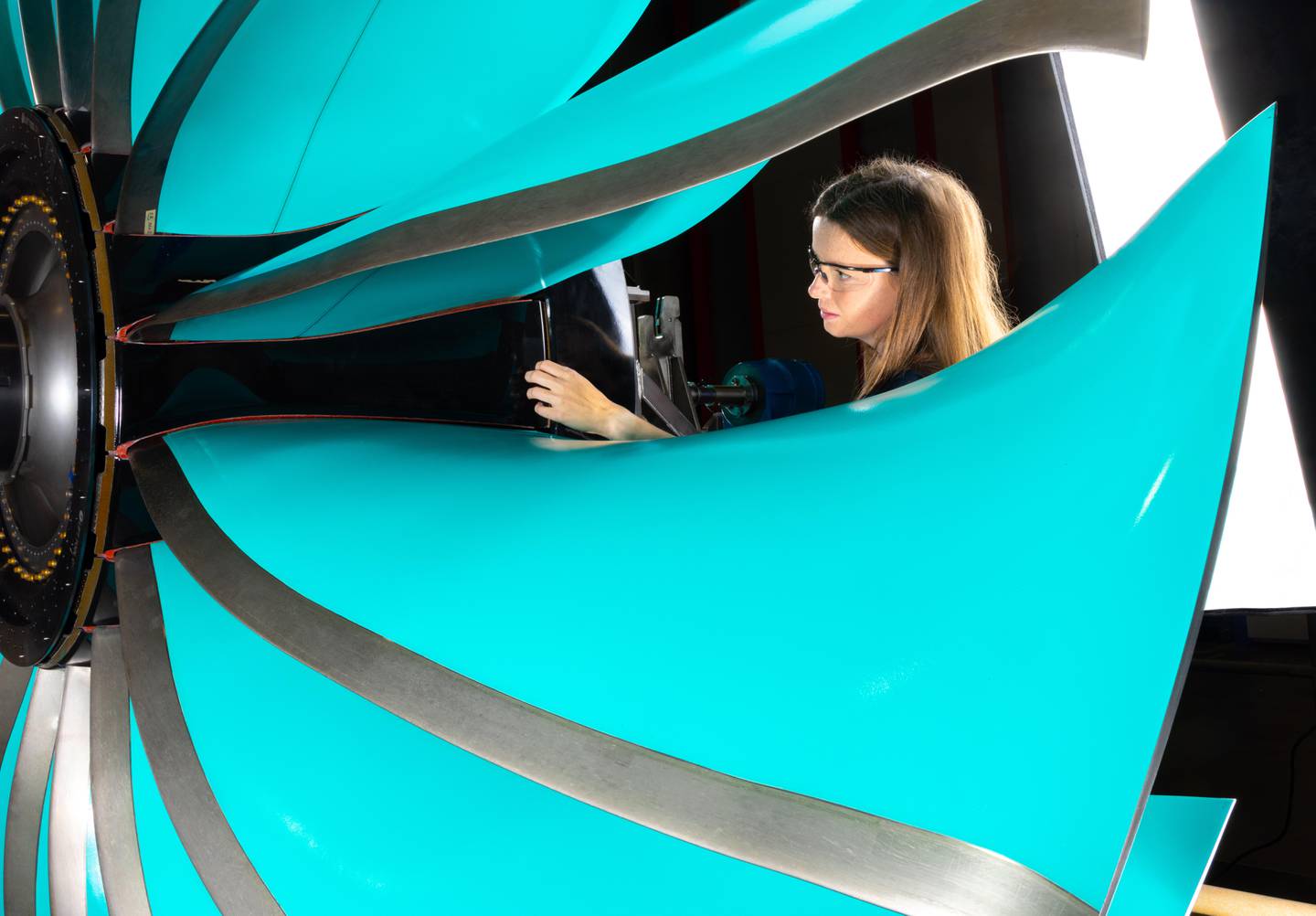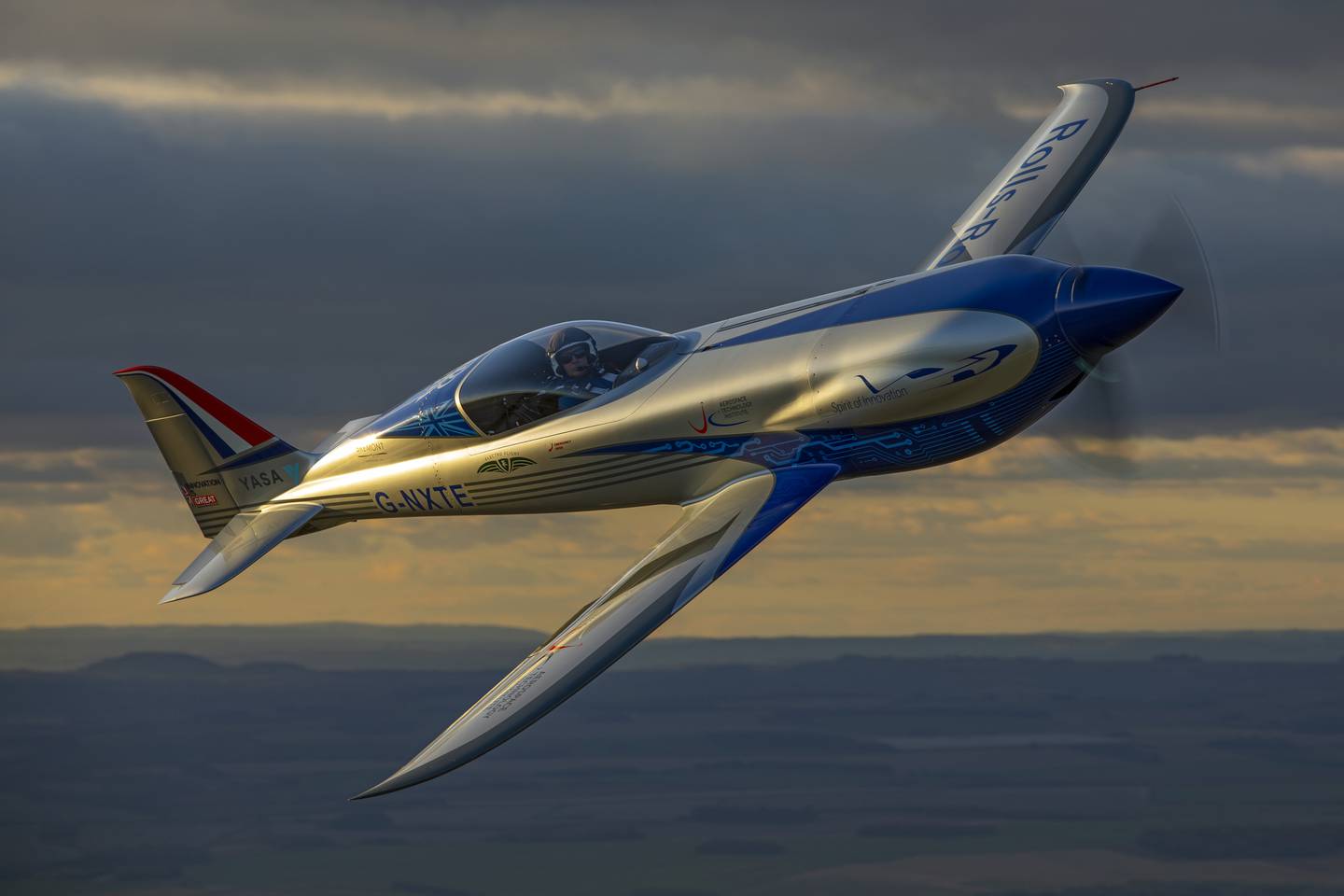
Rolls-Royce said on Monday it would begin testing this year on a hydrogen-powered jet engine, taking a cautious step into a market on which much of the rich world is pinning its low-emission hopes.
The ground tests on a Rolls-Royce made AE2100 engine in Britain were announced on the first day of the Farnborough Airshow, one of the industry's first major post-pandemic gatherings and an event billed as showing off the future of aviation.
If the ground tests in Britain and at an unspecified time in America go well, Rolls-Royce hopes to proceed to mid-air trials and start powering hydrogen engines for real from the middle of the 2030s.
Although not, by its own admission, going in all guns blazing on hydrogen — "thoughtfully" is senior engineer Alan Newby's preferred word — Rolls-Royce believes it has market potential and is working with the easyJet to explore its possibilities.
But not all its eggs are going in that basket. The company also announced on Monday that the newest model in its range of classic jet engines, the UltraFan, was entering its "final build phase".
And there are two further strands to the company's green ambitions — sustainable aviation fuels, which can be dropped into existing jet engines, and battery-powered electric planes.
Hydrogen
The case for using hydrogen as a fuel is essentially twofold: it is the most abundant element in the universe, and no greenhouse gases are produced when it is burned.
That is only part of the story, though, because hydrogen first needs to be separated from water, which leaves you back at square one if you need a carbon-heavy process to do it.
The preference is therefore for "green hydrogen", which is made in a low-emission process and has been described by the president of the European Commission as essential to end the EU's energy reliance on Russia.
US President Joe Biden wants to create "hydrogen hubs" around America, while Britain too has plans for a "world-leading hydrogen economy" with 9,000 jobs by 2030.

The Farnborough Airshow in Hampshire has played host to the latest and greatest from the aerospace industry since 1948. Here, 'The National' takes a look back at 74 years of aviation. All photos: Getty Images
Rolls-Royce believes aviation is one of the hard-to-decarbonise markets where hydrogen can play a role and has looked into the options for storing the fuel as a gas or liquid and powering small to mid-sized aircraft.
The AE2100 test starting this year in Britain will be followed by tests on a Pearl 15 model at a site in Mississippi "at a future date", the company said.
There is no date yet for when airborne tests might happen, but engine makers are working backwards from a target date by Airbus to assemble the first zero-emission commercial aircraft by 2035.
The company is "intrigued and interested" in the market, said Mr Newby when The National toured the company's factories in Derby this month, but he made no secret of the challenges that exist around it.
These include the minus 253°C temperatures needed to store it as a liquid, the question of how to transport the fuel, and the fact that hydrogen takes up four times the volume of kerosene.
"When you can use electrification, you should," said Mr Newby. But "we are clear that hydrogen will play a role, and the question we are trying to answer is how much of a role will it play in aerospace."

The UltraFan gas turbine is now in its "final build stage". Photo: Rolls-Royce
UltraFan jet engine
Painted light blue to make it stand out, the prototype UltraFan is Rolls-Royce's newest and most efficient take on the classic gas turbine and is due for its first full testing run this year.
For Andy Geer, the UltraFan's chief engineer, operating the only one currently in existence is a daunting prospect - like a Mars rover, "if you go the wrong way and tip it in a hole there's no way back".
Adding to the space-age feel, Mr Geer has a bank of desks set up like Nasa mission control that will monitor the engine when it powers up in a £90 million ($107m) testing hangar called Testbed 80.
The company said the final build phase would involve a test run that uses only sustainable aviation fuel, extending the UltraFan's potential shelf life if cleaner fuels gain in popularity.
Burning less fuel is both good for the planet and economically good for Rolls-Royce, said Mr Geer, who reeled off statistics about the UltraFan's superiority to older models: it burns as much as 25 per cent less fuel, may generate 35 per cent less noise, and is made up of 2,800 instruments.
"We see a bright future for gas turbines," said Mr Newby.
Sustainable fuels
Rolls-Royce has had much to say already about sustainable fuels, which it regards as the best short-term hope for reducing emissions while the hydrogen and electric markets take shape.
Sustainable fuels, a blend of kerosene and animal or plant matter, are more expensive than normal jet fuel but Rolls-Royce wants to turn the tide by pursuing a 100 per cent clean formula.
They are known as "drop-in" fuels because they can, in principle, be poured into existing jet engines without more fundamentally reimagining an aircraft like you would with hydrogen or electrics.
The cleaner fuels have been put through rigorous testing in which pilots slam the throttle or shut off the engine to see what will happen if things go wrong.
"What we are trying to do is signal that you can invest with confidence," bringing money from governments and oil companies into the sustainable fuel market, said engineering director Simon Burr.

The all-electric 'Spirit of Innovation' broke world records for a zero-emission plane. Photo: Rolls-Royce
Electric planes
Farnborough in 2020 was meant to be a preview of one of Rolls-Royce's prize pieces, the all-electric one-seater plane Spirit of Innovation, but that year's airshow never happened and the plane has now graduated into a world record holder that insiders call the "fastest electric anything".
Battery-powered aircraft such as short-range air taxis and medical evacuation planes have a bright future, engineers believe, although it is not realistic for long-haul passenger planes to fly all-electric anytime soon.
Hybrid planes are also an option. As part of its announcements at Farnborough, Rolls-Royce said it had recently finished tests in the UK and Norway in which a hybrid-electric engine model delivered more than 1.5 megawatts of power — a new benchmark for the sector, the company said.
The next steps are for Rolls-Royce to talk to aircraft manufacturers about what their future requirements might be.
"We are pioneers of power and this programme puts us in a great position to pave the way to make hydrogen and hybrid-electric systems a reality," said Chris Cholerton, Rolls-Royce's president of civil aerospace.
"Combined with our work on sustainable aviation fuel and further gas turbine efficiency, we are making real progress on the hard yards of research and development towards making net zero flight a reality."